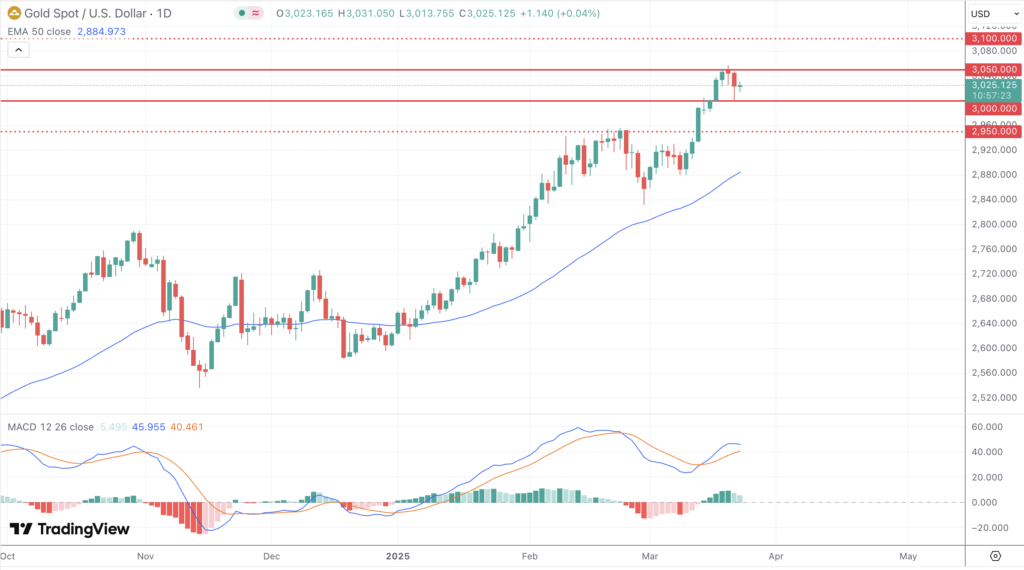Key Takeaways
- Gold holds firm near $3,025 after recent highs, facing mild headwinds from a stronger USD.
- Technical support remains robust around the $3,000 mark, backed by the ascending 50-day SMA.
- RSI indicates potential for further bullish movements without immediate risk of being overbought.
- Federal Reserve policies and geopolitical developments will be critical drivers of price movements in the coming sessions.
Market Dynamics and Recent Performance
Gold prices have maintained strength over the past week, settling into a consolidation phase after recently touching record levels above $3,050. Currently, spot gold is trading around the $3,025 level, marking a slight pullback from its all-time high of $3,057 reached last week. This modest retracement comes amid profit-taking activities, as traders reassess positions after substantial gains spurred by geopolitical tensions and evolving monetary policy expectations.
Despite a stronger U.S. dollar placing mild downward pressure on gold prices, sentiment remains generally positive. The market is actively weighing contrasting influences, including prospects of a possible resolution in geopolitical conflicts and recent Federal Reserve policy statements.
Technical and Fundamental Influences
On the technical side, gold remains in a clearly defined upward trend on the daily and weekly charts. Prices currently find immediate support around the critical psychological level of $3,000, reinforced by the ascending 50-day Simple Moving Average (SMA) located just below this level. This moving average has consistently provided reliable dynamic support in recent months, confirming the strength of the underlying bullish trend.

The Relative Strength Index (RSI) is presently positioned around 60, indicating that gold remains bullish but is not yet overbought, leaving room for potential upward movement in the short term. Meanwhile, the Moving Average Convergence Divergence (MACD) indicator shows declining bullish momentum, hinting at a short-term consolidation or minor pullback before resuming a broader upward trend.
Fundamentally, the Federal Reserve’s recent signals to hold rates steady, with indications of potential rate cuts later in the year, provide a favorable backdrop for gold. Lower interest rates typically decrease the opportunity cost of holding non-yielding bullion, enhancing its appeal. Additionally, the safe-haven demand stemming from lingering geopolitical uncertainties continues to offer fundamental support, even though recent optimism regarding potential peace talks in Ukraine has somewhat dampened this effect.
Looking Forward
Looking ahead, gold prices are poised to remain responsive to key economic data, geopolitical developments, and central bank communications. Should market conditions continue to favor lower interest rates and persistent geopolitical risks, gold could revisit and potentially surpass its recent high around $3,057. Technical indicators suggest that a definitive breakout above the $3,050 resistance could open the path toward the next target at approximately $3,100.
Conversely, if geopolitical tensions ease significantly or if economic data prompts a stronger stance from the Federal Reserve, prices might experience a deeper correction, potentially retesting the support levels around $2,975 to $3,000.

